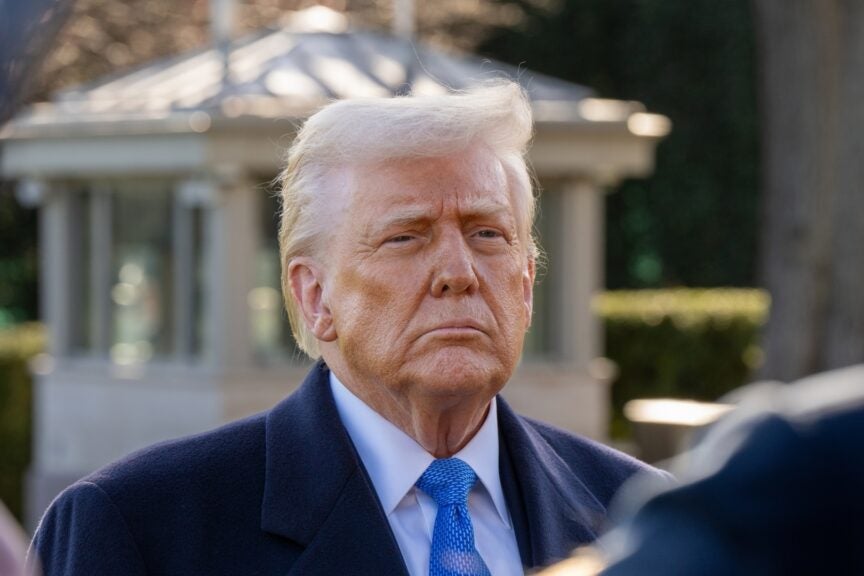Trump’s Vision for U.S. Manufacturing: A New Era
In a dramatic departure from longstanding economic strategies, former President Donald Trump has unveiled a bold tariff strategy aimed at revitalizing U.S. manufacturing. By prioritizing military equipment and advanced technology, this approach seeks to bolster American industry and create a more resilient economy.
The Shift from Textiles to Technology
Traditionally, U.S. manufacturing policy has focused on textiles and consumer goods, but Trump’s vision pivots towards “big things”—military and technological innovations. This strategic shift reflects a growing recognition of the need to adapt to global competition and national security considerations.
Understanding the Rationale
Trump argues that prioritizing military production not only enhances national security but also stimulates job creation in high-tech sectors. According to a report from the U.S. Bureau of Labor Statistics, employment in manufacturing has seen a steady decline since the early 2000s, prompting urgent action.
- In 2000, the manufacturing sector employed over 17 million workers.
- By 2021, this number had dropped to approximately 12 million.
Thus, Trump’s focus on military equipment is not merely a political maneuver but a calculated response to economic realities.
Economic Implications of Tariff Changes
The proposed tariffs on imported goods aim to encourage domestic production. By imposing higher taxes on foreign-produced military technology, Trump intends to level the playing field for American manufacturers. This policy aligns with a broader trend observed in various countries, where protectionist measures have gained traction in response to globalization.
Economists are divided on the potential impact of these tariffs. Some predict a resurgence in U.S. manufacturing jobs, while others warn of inflationary pressures and potential retaliation from trading partners. A recent study from the National Bureau of Economic Research suggests that protective tariffs can lead to short-term gains in domestic employment but may ultimately result in higher prices for consumers.
Innovation as a Driving Force
At the core of Trump’s manufacturing strategy is the emphasis on innovation. By fostering an environment that encourages research and development (R&D), the government can drive technological advancements that enhance the competitiveness of U.S. manufacturers.
Investment in R&D
The administration’s plan includes significant investments in R&D, particularly in sectors related to defense and cybersecurity. According to the American Association for the Advancement of Science, U.S. spending on R&D reached approximately $680 billion in 2020, with a growing share allocated to defense technologies.
This investment is crucial for maintaining a technological edge over global rivals, particularly China, which has been aggressively investing in its military capabilities.
Potential Challenges Ahead
Despite the ambitious objectives, Trump’s tariff strategy is not without its challenges. The U.S. economy is deeply interconnected with global supply chains, and abrupt changes could have unintended consequences.
Global Supply Chain Disruptions
Experts warn that heavy tariffs could disrupt existing supply chains, leading to increased costs for manufacturers reliant on imported components. A report from the Institute for Supply Management indicates that disruptions in supply chains can lead to production delays and decreased overall efficiency.
Moreover, retaliatory tariffs from other countries could escalate trade tensions, further complicating the economic landscape.
Looking Ahead: A New Manufacturing Landscape
As Trump’s strategy unfolds, the manufacturing landscape in the U.S. may undergo significant changes. A renewed focus on military and technological production could lead to the emergence of new industries, potentially creating thousands of high-skilled jobs.
A Call for Bipartisan Support
For this vision to succeed, it is imperative that policymakers from both parties collaborate on sustainable manufacturing policies. Investing in education and workforce development will be essential to prepare American workers for the jobs of the future.
Conclusion: The Future of U.S. Manufacturing
Trump’s bold tariff strategy represents a pivotal moment for U.S. manufacturing. By prioritizing military and technological advancements, the strategy aims to revitalize an industry that has faced significant challenges in recent decades. However, the success of this approach hinges on careful implementation and a commitment to fostering innovation while navigating the complexities of global trade.
As we look to the future, the journey towards a reinvigorated manufacturing sector will require vision, collaboration, and adaptability. The stakes are high, and the outcome will shape the economic landscape for generations to come.
Join the conversation on the future of U.S. manufacturing and share your thoughts on how we can support this transformative vision.
See more Business Focus Insider Team

